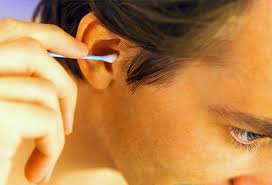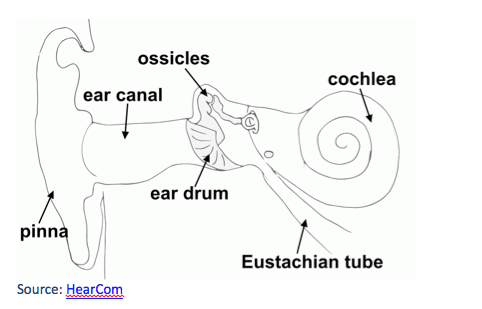hearing educatoin
Hearing Aid Myths You Want To Block Out
Over the years, the opinion – professional and personal – of hearing aids has changed quite dramatically. One week they sound like a must-have for anyone with hearing issues, the next you can find some horrible story that relates to a fault or a problem. However, this constant wariness of a new technology means that many people simply miss out on the help that they could be receiving thanks to the creation of what turns out to be nothing more than a myth.
With the help of hearing aid myth busting below, you can work out if going for a hearing aid is something that you should be doing.
Buying Online is Cheaper and Easier!
This particular myth has existed for some time now, and points to an incorrect belief that simply buying a hearing aid on your own from the web is easier and cheaper than going to a medical professional and seeking aid. This is not true, as you’ll miss out on the vital evaluations and assistance in making sure you can get the hearing aid to work – you also cannot get the repairs which may be needed later on down the line.
Two Aids are not needed!
Another silly myth, two hearing aids are most definitely needed for the right kind of person. If your ears are both damaged and have limited hearing, then you are obviously going to struggle to hear what you are doing! Two aids are needed if you have damage in both ears. If you have damage in just one ear, then only one is needed.
Hearing Aids Fix your Hearing
This damaging myth makes people believe that six months or a few years of wearing an aid will make your hearing come back to life – as good as new! Sadly, the human body does not work with this. There is no cure for hearing loss; this merely acts as an amplification of what you need, which will improve your overall hearing and your listening in general.
Invisible Aids are Best
The last of our myths comes from the fact that many people believe that the see-through or “invisible” aids are the best. There are various forms and each kind comes personally to you – this myth comes from personal choice, not any particular facts. The hearing aid a friend or colleague uses may be totally unsuited to your needs.
As you can see, the world of hearing aids is one which needs you to do your own due diligence and learning – if you are ever confused about your ears or your aids, go and see a professional who can set you right.
Read Full Post | Make a Comment ( None so far )Next BIG Thing: Apple & Hearing Aids
People wait in long lines and even camp out to get their hands on new Apple devices as soon as they’re available. But they drag their feet, sometimes for years, when it comes to purchasing another piece of technology that could greatly improve their lives: hearing aids.
Hearing-aid manufacturers and audiologists hope a new collaboration between them and Apple will help.
Danish hearing-aid company GN ReSound last week announced a new hearing aid that’s compatible with the iPhone, iPad and iPod Touch. Called LiNX, the device syncs wirelessly with the newest Apple mobile devices and takes advantage of iOS 7’s new accessibility options for the hearing-impaired.
At its most basic level, the LiNX acts like a hybrid of hearing aids and stereo Bluetooth headphones. Phone calls, FaceTime chats, music, movies, turn-by-turn navigation or other audio can be streamed directly to a small earpiece. When they’re not pulling in audio from a smartphone or tablet, the hearing aids work like normal, picking up in-person conversations and surrounding sounds.
Apple worked closely with ReSound on the hearing aid and assisted them in publicizing its launch. And this being Apple, there are plenty of bells and whistles packed into the device.
To read more, click here.
The Bullied and Hearing Loss
Bullying is a serious problem in many U.S. schools; it is estimated that 30 percent of students in grades 6-10 have been involved in some sort of a bullying incident. While there are no specific data on the number of children with disabilities who are targeted, research suggests that children with noticeable disabilities (such as  hearing aids and cochlear implants) may be twice as likely to be bullied.
hearing aids and cochlear implants) may be twice as likely to be bullied.
Signs of Bullying
•Refusal to go to school or sudden lack of interest in school.
•Change in grades.
•No longer shows interest in family or school activities.
•Appears sad or angry after a phone call/text message/email.
•Does or says something that is out of character.
There are reports that some teens with hearing loss are refusing to wear their hearing aids at school for fear of being bullied, or as a result of already being bullied by classmates. Students with hearing loss who are not wearing their hearing aids are at a greater risk of failing in school since they are not hearing what the teachers and their classmates are saying. Unfortunately, as parents we cannot protect or prevent our children from having to deal with hurtful situations. But what we can do is to make sure that they are aware that these situations may occur and that they are prepared to deal with them. Do give your child some space to solve their own problems so they are able to test and develop their skills, but also remain alert and aware of changes in your child’s emotions and behavior.
Read Full Post | Make a Comment ( None so far )Earwax Buildup Can Affect Hearing
 Although the topic is somewhat unappealing, it’s a matter that affects all of us – earwax, also called cerumen. Contrary to its name, earwax isn’t actually a wax, rather it’s a mixture of skin cells and oil secreted by glands in the ear canal. We have earwax because it lubricates and protects the sensitive lining of the canal. It also traps dirt and has some antimicrobial properties which means it can help fight off infections.
Although the topic is somewhat unappealing, it’s a matter that affects all of us – earwax, also called cerumen. Contrary to its name, earwax isn’t actually a wax, rather it’s a mixture of skin cells and oil secreted by glands in the ear canal. We have earwax because it lubricates and protects the sensitive lining of the canal. It also traps dirt and has some antimicrobial properties which means it can help fight off infections.
Earwax tends to move to the opening of the ear, as we chew and make other jaw movements, where it then dries and flakes out of the ear. However, sometimes an ear canal can get blocked up with earwax – this is called an impaction. This can happen when the ear produces too much earwax, when the earwax gets too hard to wash away, or when a Q-Tip forces the earwax deeper into the ear canal rather than cleaning it out.
Health experts actually do not recommend the use of Q-Tips to clean the ear out. In addition to causing impactions, Q-Tips can also scratch your ear canal and cause an infection.
If you have an earwax blockage it’s likely that you will feel a pressure sensation in the ear, some degree of hearing loss, and even earache. These symptoms usually serve as a prompt to go see a doctor.
A doctor has several options to remove a wax blockage. The most common method is to flush out the ear with pressurized water. Alternatively, a doctor can use a small wire instrument to remove the wax manually. You can also find earwax removal kits in pharmacies that have wax softening drops and a bulb syringe to flush out the ear. Your ear canal and eardrum are delicate and can be easily damaged by using objects to dig out excessive or hardened earwax – take care if using self-treatment.
If you have a problem with excess earwax, an expert may advise you to carry out a simple home procedure to prevent buildup. Flushing out your ears once a week with lukewarm water, using a common rubber bulb syringe can clean out wax before it accumulates. Ideally, ears might never need cleaning, as they are designed to clean themselves.
Read Full Post | Make a Comment ( None so far )How Do We Hear?
Ever wonder how the human body can perceive sound? How do you process your favorite song from the car radio to the inside of your head?
Music is composed of sound waves, which are actually all around us. Some are loud and others are soft. Some are high pitched and others low pitched. These sound waves travel through the ear canal until they hit the eardrum in the middle ear. This causes the eardrum to vibrate. The eardrum passes the vibrations created by the sound waves through the middle ear bones into the inner ear.
The inner ear, or cochlea, is shaped like a snail, and is filled with liquid that carries the vibrations to thousands of tiny hair cells inside of it. Hair cells are responsible for changing the vibrations into electrical signals, which are then sent to the brain through the hearing nerve. Finally, your brain tells you what you are hearing, whether it’s a nice tune or traffic noise. All this happens in a fraction of a second!
However, this ability of hear isn’t foolproof – very loud sounds can do damage to our hearing. How does this happen? As was mentioned earlier, sound vibrations move tiny hair calls in our inner ear. More specifically, the vibrations move a small patch of stereocilia sticking up out the top of each hair cell. The stereocilia rock back and forth with sound. However, if the sound is too loud the stereocilia can break, which causes the hair cell to die. Once a hair cell dies it can no longer send sound signals to the brain, and unfortunately they don’t grow back. This is a cause of hearing loss. Protect your hearing and avoid loud noise exposure.
Read Full Post | Make a Comment ( None so far )
« Previous Entries
